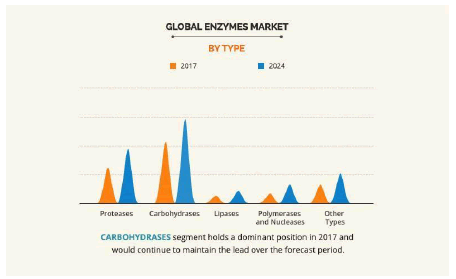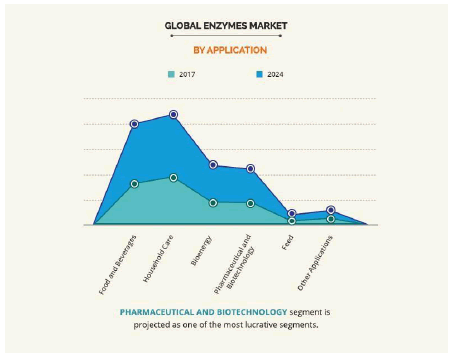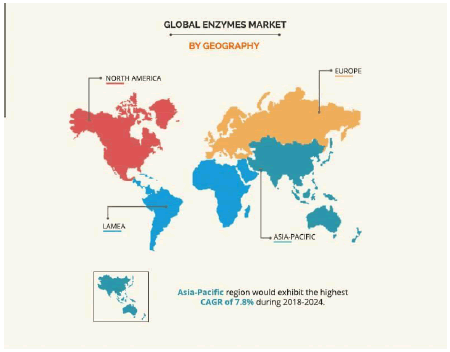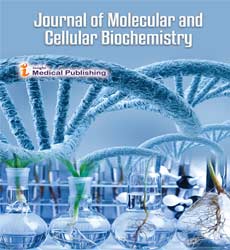MARKET ANALYSIS ON EUROSCICON CONGRESS ON ENZYMOLOGY AND MOLECULAR SCIENCES
Associate Head of School (Research), School of Life Sciences, Core Member, CHT - Centre for Health Technologies, Australia, E-mail: Stella.Valenzuela@uts.edu.au
Summary
Enzymology implies the study of enzymes and their structures. The reports in this section analyse the global enzymology market by application, equipment, tools, methodologies, software, and services. The application segments for instance hold the markets for enzymology based diagnosis & therapy; while the equipment segment covers markets for technologies such as microarrays, Ultrasonic processing, and Gel electrophoresis. Drug discovery forms the highest revenue-generating application market of enzymology. These reports show us the latest forecasted revenues of all the market segments and also provides the exhaustive analyses of current trends, market, growth strategies, and opportunities that are adopted by the key market players.
Importance & Scope
Enzymology is a new technology that is growing rapidly due to its higher applications in a lot of fields and due to having bright and clear future vision. A most exciting development over the last years is the application of genetic engineering techniques in enzymology. There are a number of properties which may be improved by genetic engineering including the kinetics of the enzyme the ease of downstream processing & various safety aspects. Enzymes from dangerous or unapproved microorganisms and from slow-growing plant or animal tissue can be cloned into high production microorganisms. New enzyme structures can be designed and then produced in order to improve on existing enzymes or create new activities. Many number of possibilities now came in form for construction of the artificial enzymes, these are generally synthetic polymers or oligomers with enzyme-like activities, often called synzymes. Enzymes can be immobilized which means an enzyme can be linked to an inert support material without any loss of activity which facilitates reuse and recycling of the enzyme. Use of engineered enzyme to form biosensor for analytical use is also a recent activity taking place among the developed countries. Some enzymes make use in diseases diagnosis so they can be genetically engineered to make the task easier. Thus we can say that there is a huge scope of the enzyme technology in the future as well as in present.
List of major Enzymology Related Societies
• American Society for Biochemistry and Molecular Biology (ASBMB)
• Association for Clinical Biochemistry (ACB)
• Society for Integrative and Comparative Biology (SICB)
• Canadian Society of Clinical Chemists (CSCC)
• Society of Medical Biochemists of Serbia
• Federation of European Biochemical Societies (FEBS)
• American Chemical Society (ACS)
• Clinical Laboratory and Analytical Sciences (CLAS)
• Biochemical Society
• Signal Transduction Society
• International Conference on the Bioscience of Lipids
• Society for Free Radical Research European Region (SFRR-Europe)
• Canadian Society for Chemistry (CSC)
• International Union of Pure and Applied Chemistry (IUPAC)
• American Association for Clinical Chemistry (AACC)
• European Federation of Clinical Chemistry and Laboratory Medicine (EFCCLM)
• International Federation of Clinical Chemistry and Laboratory Medicine (IFCC)
• Royal Society of Chemistry (RSC)
• Society for the Study of Inborn Errors of Metabolism (SSIEM)
• Société de Chimie Thérapeutique (SCT)
• International Society for Oncology and BioMarkers (ISOBM)
• Federation of the American Societies for Experimental Biology (FASEB)
• International Society for Antiviral Research (ISAR)
• Cell Stress Society International (CSSI)
• Drug, Chemical & Associated Technologies Association (DCAT)
• American Institute of Chemical Engineers (AIChE)
• German Chemical Society E. V.
• European Society of Gene and Cell Therapy (ESGCT)
• Japan Society of Gene Therapy (JSGT)
• Korean Society of Gene and Cell Therapy (KSGT)
• European Tissue Repair Society (ETRS)
The Global Enzymes Market was esteemed at $7,082 million out of 2017, and is anticipated to reach $10,519 million out of 2024 at a CAGR of 5.7% from 2018 to 2024. Proteins are biocatalysts that quicken the response and deliver the coveted outcomes in organic responses. They are proteinaceous in nature and have assembled an uncommon consideration as of late inferable from its wide applications. They are utilized in nourishment and creature feed, materials and cleansers, pharmaceuticals and biotechnology R&D, producing ventures, and others (paper and mash preparing, calfskin handling and agribusiness). Their application in the assembling forms, results in noteworthy cost decreases because of constrained vitality utilization, and better substrate action, has added to the extension of proteins industry.
Market Dynamics
The development of the worldwide chemicals showcase is significantly determined by appeal for powerful compounds based pharmaceuticals. Different components boosting the market development incorporate development incorporate increment interest for sustainable power sources, for example, biofuels, ascend in commonness of different endless illnesses, for example, stomach related sicknesses and irritation, and wide utilizations of catalysts in different enterprises. Be that as it may, factors, for example, taking care of and wellbeing issues of compounds and high affectability of catalysts to temperature and pH hamper the market development. On the other hand, increment in mindfulness about the use of catalysts in protein designing innovation and high market potential in the undiscovered rising economies are relied upon to give lucrative development chances to the market extension.
Market Segmentation
The worldwide enzymes showcase is portioned based on type, source, response compose, application, and area. Based on type, the market is divided into protease, carbohydrase, lipase, polymerase and nuclease, and different composes. Carbohydrase represented the biggest piece of the overall industry in 2017, and is required to proceed with this pattern all through the figure time frame. This is ascribes to the way that carbohydrase is the most unmistakable sort of compound utilized in pharmaceutical and sustenance enterprises. Then again, polymerase and nuclease compounds have most astounding development potential in the worldwide chemicals showcase, and are relied upon to develop at a CAGR of 9.8% amid examination period.

Based on source, the market is ordered into microorganisms, plants, and creatures. Microorganisms are the real wellspring of proteins, attributable to the simple accessibility and low generation cost while creatures section have most astounding development potential in the worldwide compounds advertise amid investigation period.

Contingent upon response compose, the market is divided into hydrolase, oxidoreductase, transferase, lyase and others response composes. Hydrolase held the biggest offer of the market in 2016, trailed by oxidoreductase. Transferases has most astounding potential in worldwide catalysts advertise, and is relied upon to develop at a CAGR of 7.4% amid investigation period.
Based on application, the worldwide compound market is portioned into nourishment and drinks, family unit mind, bioenergy, pharmaceutical and biotechnology, feed, and different applications. Family unit mind portion commanded the market by application taken after by nourishment and refreshments application section. The catalysts utilized in clothing and dishwashing cleansers are known as family mind compounds. Then again, pharmaceutical and biotechnology based catalysts has most elevated development potential amid the estimate time frame. In view of district, the worldwide market is contemplated crosswise over North America, Europe, Asia-Pacific, and LAMEA. North America held the biggest offer of the market in 2017, trailed by Europe. Then again, Asia-Pacific is foreseen to overwhelm the market amid the investigation time frame, inferable from high pervasiveness of endless issue, increment in expendable earnings, and change in persistent mindfulness about catalysts based pharmaceuticals and protein designing strategies.

Prof. Stella Venezuela | Associate Head of School (Research), School of Life Sciences, Core Member, CHT - Centre for Health Technologies, Australia.
Email: Stella.Valenzuela@uts.edu.au
Contact Number: +61 2 95141917
Open Access Journals
- Aquaculture & Veterinary Science
- Chemistry & Chemical Sciences
- Clinical Sciences
- Engineering
- General Science
- Genetics & Molecular Biology
- Health Care & Nursing
- Immunology & Microbiology
- Materials Science
- Mathematics & Physics
- Medical Sciences
- Neurology & Psychiatry
- Oncology & Cancer Science
- Pharmaceutical Sciences
